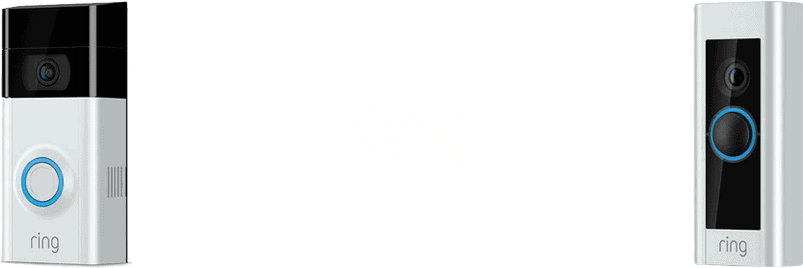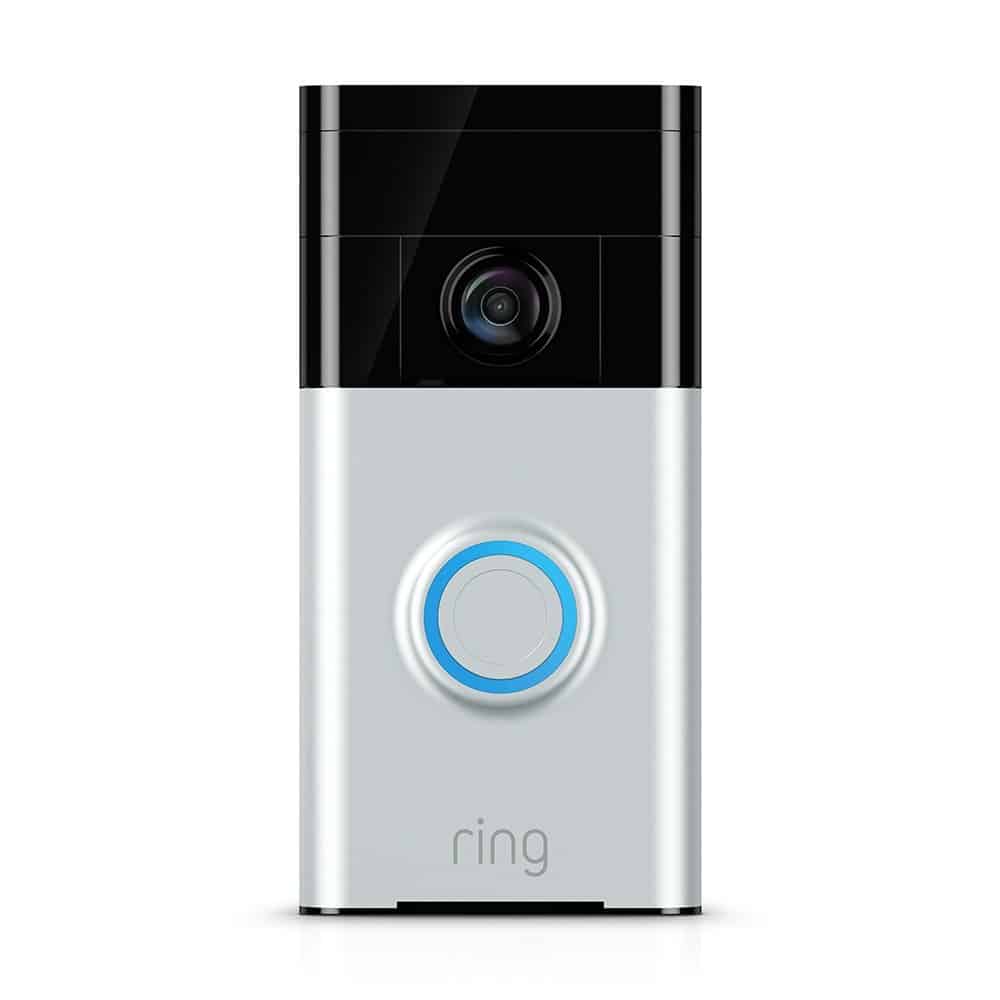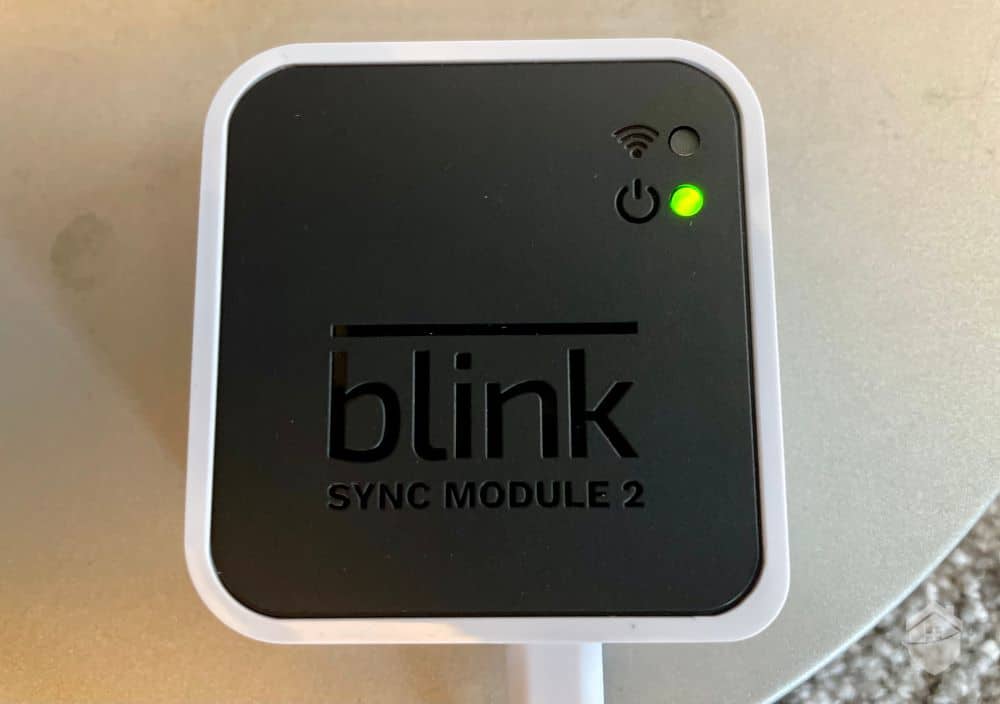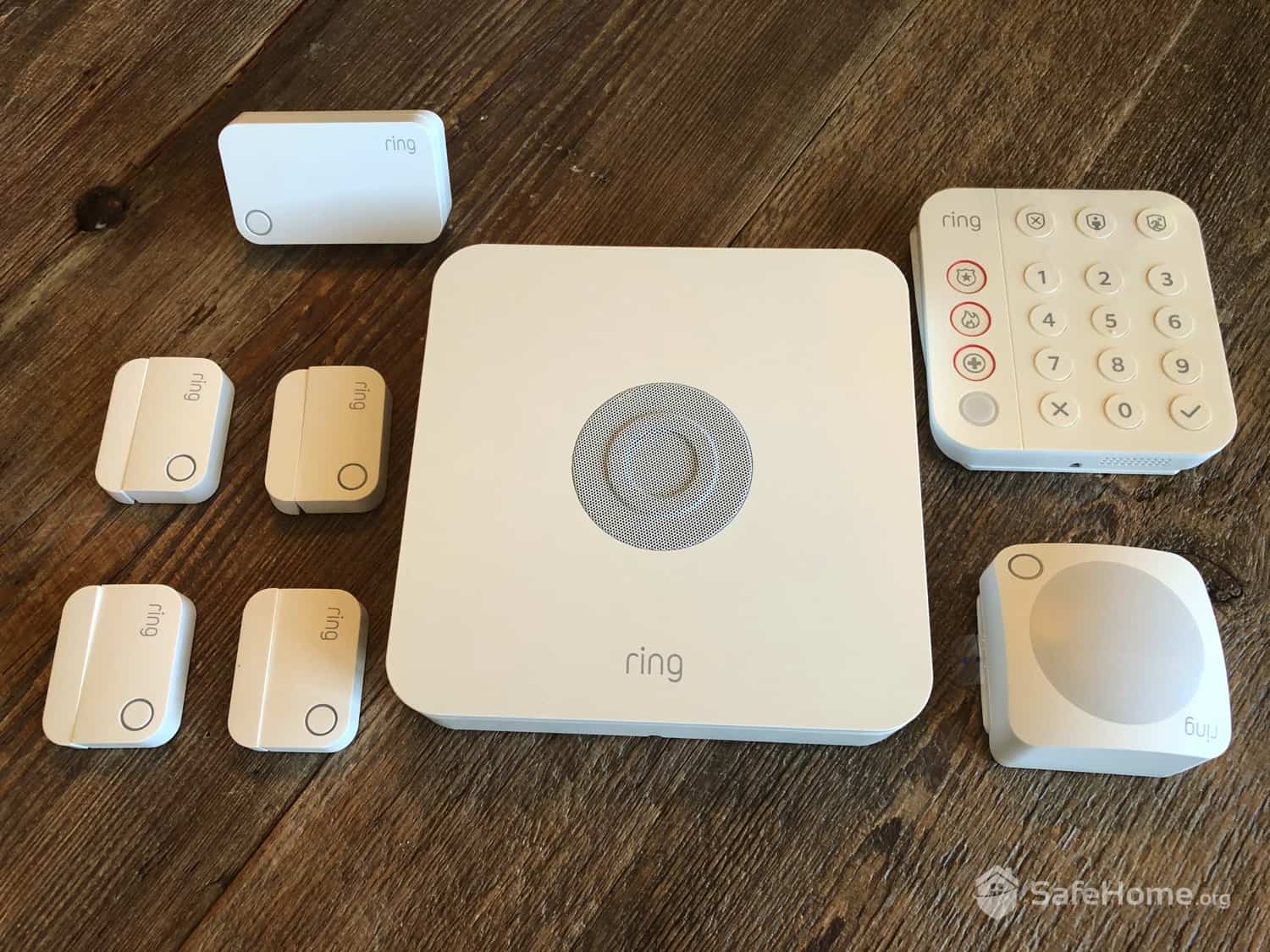What’s in a Name?
Most home security companies – SimpliSafe, ADT, even Vivint – offer one video doorbell option. Ring offers eight. Eight! Of course, it’s probably not surprising that Ring is the overachiever in this category. After all, the company practically invented video doorbells.
Here, we compare two of the company’s best options – the Ring video doorbell and the Ring Plus video doorbell. Right away, you probably see a problem. These names are more than a little similar. In fact, it’s not easy to differentiate between any of Ring’s doorbells. So before we get to the comparison, let’s talk about how the company organizes its inventory.
First, Ring offers three doorbell tiers, each one identified by its suffix (or lack thereof, as the case may be).
- The Ring (no suffix) is the entry-level version of the doorbell.
- The Ring Plus is the mid-tier version.
- The Ring Pro is the flagship version.
You should also know that each of these versions comes in a choice of wired or battery-powered. Don’t worry, there’s not much difference between wired and battery-powered in terms of features, and when it’s relevant, we make sure to let you know. For now, though, let’s call the no-suffix version the Ring and the Plus version the Ring Plus.
Now that’s sorted – onward!
Ring Vs. Ring Plus: The Basics
It’s pretty simple to bottom-line these two devices. As you would expect, the Ring Plus comes with more features than the Ring. But it also comes with a higher price. Simple, right?
Except this quick summary doesn’t tell you everything you need to know. Just what extra features does the Ring Plus include? Are those features truly worth the price difference? Likewise, just what is the Ring missing? Sure, you can save money over the Ring Plus, but will the Ring keep you safe enough to justify paying less?
If we’re going to answer these questions, we’re going to have to dig just a little deeper.
FYI: Just to confuse things further, the Ring Plus Video Doorbell was previously known as the Ring Pro Video Doorbell. The company changed the name only recently when it released an all-new Video Doorbell that it has christened the Ring Pro.
Ring vs Ring Plus: Features and Similarities
While the Ring and the Ring Plus are different tiers of video doorbells, they’re both still manufactured by Ring, so they do have a number of similarities. No matter which Ring tier you choose, you can be sure you’re getting all of these features.
- Reliability: We wouldn’t recommend any home security equipment that wasn’t durable and reliable, but Ring equipment is particularly well-built. Both of these devices are well-constructed, with a weight and heft that lets you know they’ll withstand the elements. Plus, in the duration of our tests, we didn’t find any bugs or glitches.
- Choice of Models: Just what you need when you’re having trouble deciding between two different cameras – more choice. Still, one of the nice things about both the Ring and the Ring Plus is that you can get them in wired or wireless models. So, you know, you can pick the one that’s going to work best with your home setup. Options are always a good thing.
- DIY Installation: Ring’s mission, from the beginning, has been to give consumers more control over their home security systems. In keeping with that mission, Ring offers one of the easiest installation processes out there. True, the wired versions require a little wiring know-how, but all Ring devices come with step-by-step instructions to ensure you don’t get lost. If that’s not enough, check out Ring’s instructional videos. All-in-all, it took us less than an hour to get both of these cameras up and running. That’s no record, but it’s a reasonable amount of time to improve your home’s security.
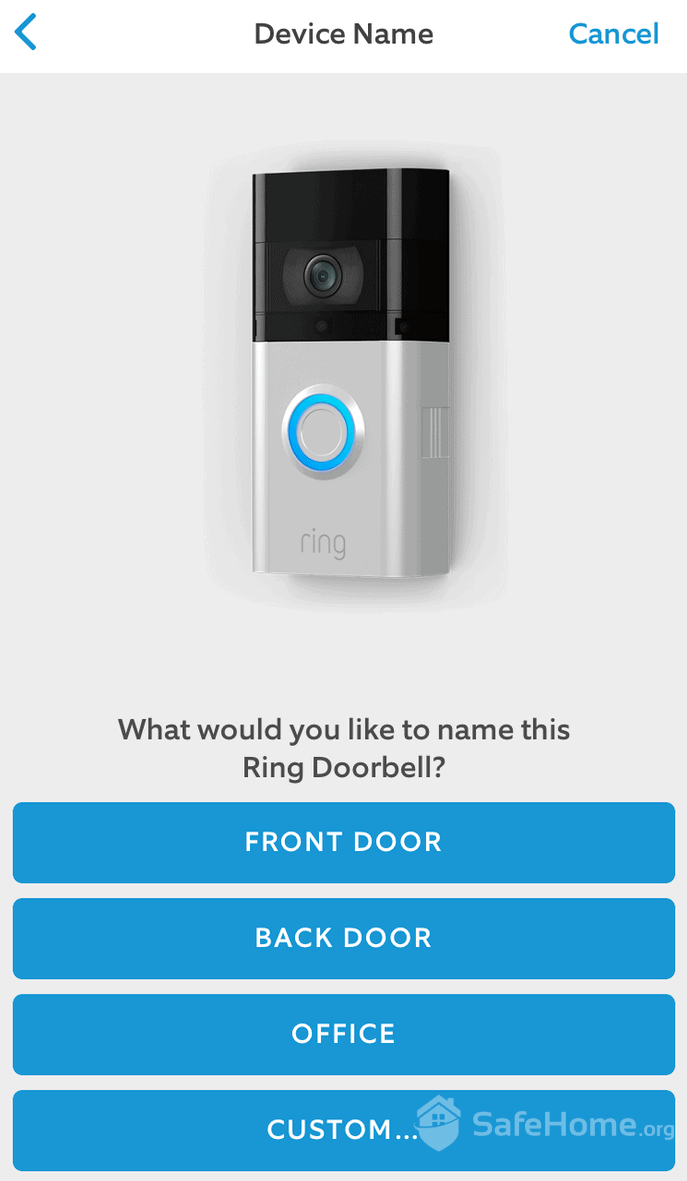
Ring Doorbell Setup
- Motion Detection: All Ring cameras utilize motion detection. They also allow you to customize motion sensitivity and set up detection zones. Those are crucial features since they cut down on false alerts. You don’t want squirrels on your porch triggering warning messages all day long. Likewise, you don’t want a barrage of alerts every time cars pass on the street. We live in an apartment. Detection zones let us focus on people walking up to our door and ignore foot traffic to other apartments.
- App-integrated: It’s easy to control both of these models through the Ring app. We found this app to be well-organized and intuitive. No complicated navigation to find what you need. We tested the cameras using both Android and iOS devices, and turning cameras on and off, checking alerts, and reviewing video were all available at the touch of a button.
Did You Know? You can stream video from your doorbell no matter where you are as long as you have cell service. We’ve watched packages get delivered while we were on vacation hundreds of miles away.
- High-Quality Video: Both the Ring and Ring Plus video doorbells provide crystal clear 1080p HD video, whether you’re looking at live feeds or checking out a recording. We might have expected the Plus version to push the resolution envelope a little, but 1080p is the industry standard, and it provides enough clarity to recognize anyone who happens to be standing on your doorstep.
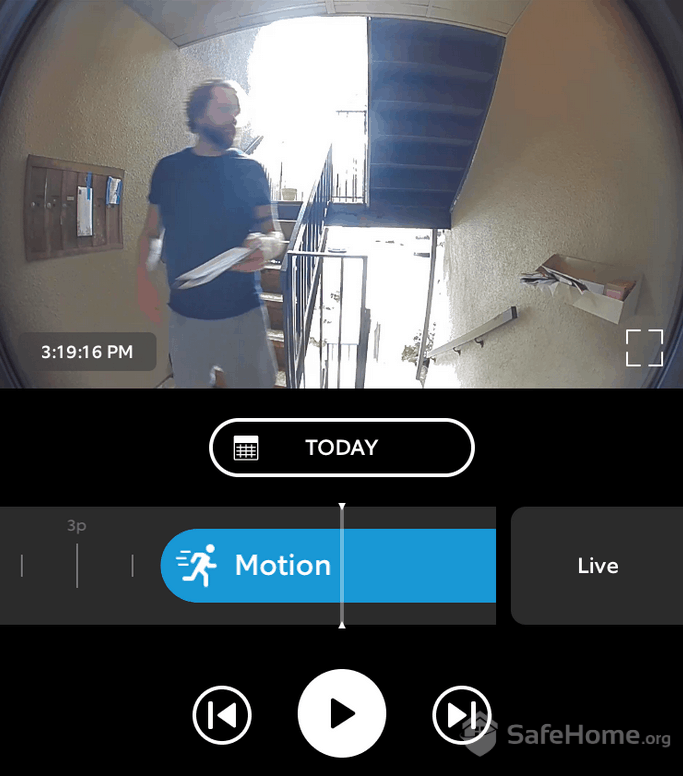
Ring Doorbell Motion Detection
- Field of View: Unless it rotates, a camera can’t provide more than a 180-degree field of view. Suffice it to say, few cameras out there reach that max number. These two cameras both come pretty close, though. The wired version of the Ring Plus offers a full 160-degree view. The battery-powered version allows for a 150-degree view. Meanwhile the Ring Video Doorbell splits the difference with a field of 155 degrees. And while these aren’t exactly the same, it’s close enough that we’re calling this a similarity rather than a difference.
- Night Vision: You get solid night vision capabilities with both of these cameras, something that’s crucial for home security, especially if you’re going to put them outdoors. The fact is, most break-ins happen at night, and if your camera doesn’t let you see what’s happening at night, you’re going to miss those porch pirates. We should point out that neither of these cameras offers night vision that’s as good as their daytime recording. That’s mostly because their daytime resolution is just that good. You can be sure that even at night, you can ID any potential home invaders.
- Two-Way Communication: Another similarity between Ring and Ring Plus is that both models have two-way communication capabilities. Ring’s two-way communication (also called two-way talk) allowed us to speak with visitors at our door using nothing but our smartphone. To be honest, most doorbell cameras include this feature these days, but we still find it pretty cool to be able to tell the FedEx guy where to put our package.
- No Local Recording: Almost any camera on the market gives you the ability to view live video. There’s no doubt that’s an important feature. If you happen to catch a thief in the act, though, you’re gonna want footage to share with local authorities. These two cameras – all Ring cameras, in fact – allow you to store footage. Cloud storage requires a monthly subscription, but fees are reasonable. Of course, there are also cameras out there that include local storage options. Lorex charges no monthly fees, ever, but you can record as much as you like.
- Reasonably Priced: Yes, the Ring doorbell is less expensive than the Ring Plus, especially if you’re buying the wired version. The bottom line, though, is that both doorbell models are reasonably priced, no matter which version you purchase. In an age when home security is necessary to protect your family, we appreciate the fact that Ring keeps prices down for these crucial devices. Plus, you don’t have to purchase a monitoring plan, so if you don’t mind monitoring your own home, you can buy a doorbell and pay nothing more, ever.
Did You Know? Ring does offer a paid cloud storage plan at only $3.99 per month. This gives you 180 days of video history and image capture, download, and video sharing capabilities.
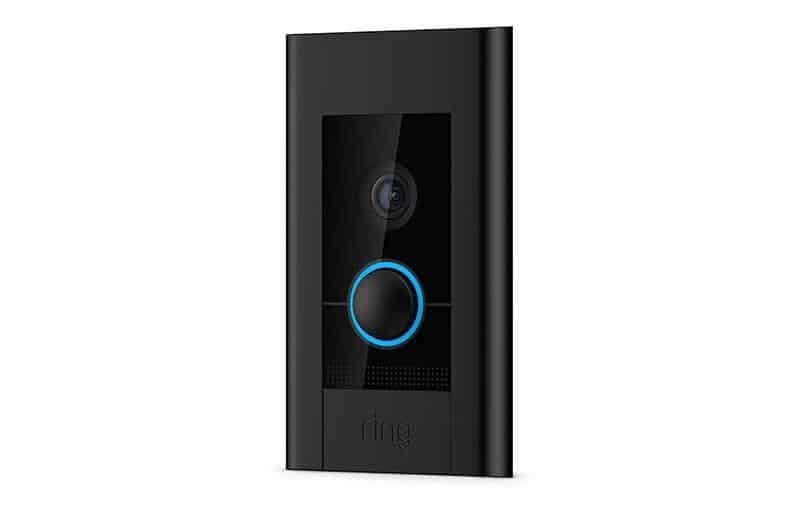
Ring Doorbell Pro
Differences Between Ring and Ring Plus
If these two devices worked exactly the same, you’d buy the Ring every time. It’s cheaper. The fact is, though, that the Ring Plus costs more because it comes with more. Here’s a quick rundown of the key differences between these two devices.
- Size: There’s something to be said for bulky home security equipment. It lets potential home invaders know that you take your family’s safety seriously. On the other hand, a video doorbell that’s too large can ruin the clean look of your home. If you’re in the former camp, someone who wants to alert everyone that you have a home security system, the Ring Video Doorbell is the way to go. The bottom line, though, is that size has no impact on how well these devices work.
- Lighting: The Ring Video Doorbell offers color night vision, so you can be sure you’ll capture what happens on your doorstep once the sun goes down. However, The Ring Plus utilizes built-in LED lighting, and ultimately, that produces a superior nighttime image. Of course, we’d be remiss if we didn’t point out that Ring also offers both the Ring Spotlight Cam and Ring Floodlight Cam review. These two cameras don’t just provide clear images. They can also startle would-be burglars away.
- Motion Sensor: According to Ring specs, these two Ring cameras rely on the same basic motion detection system, Advanced Motion Detection with Customizable Motion Zones. In our tests, we found the Plus version of this system to be more reliable. Along the same lines, our research uncovered a few complaints about the Ring Video Doorbell lagging and, in some cases, failing to recognize motion altogether.
- Alerts: You may already be detecting a pattern here – Ring Plus features are just a little better than the basic Ring Doorbell. That’s true when it comes to alerts, too. The Ring Doorbell gives you instant alerts, so you can check live footage or, if you have a monitoring or cloud storage plan, recordings. The Ring Plus doesn’t just give you alerts, though. You can customize those alerts so you know what to expect when you pull up the video. When we got the package from Amazon we were waiting for, the alert said so. Is that kind of customization necessary? Nope. It sure is handy, though.
- Cost: Here’s one category the basic Ring Video Doorbell wins. Its price is some $100 cheaper than the Ring Plus. Makes sense – as they say, you get what you pay for. Of course, cost isn’t always about comparing bottom lines. You also have to consider the value you’re getting for your money. Ultimately, we’d say both of these Ring doorbells offer a fair number of features for the price. So the real questions then are what features are most useful in your particular situation and what your home security budget can afford.
Pro Tip: With custom alerts, you can really dial-in the notifications that are sent to your phone. However, both Ring models allow you to disable notifications altogether.

Ring Video Doorbell
Ring vs Ring Plus: Cost Breakdown
It’s almost always true – you get what you pay for. One of these cameras is more expensive than the other. One useful way of comparing them, then, is to talk about exactly what you get for your money with each one.
We should note, however, that both of these doorbells come in different models, and prices can depend on which specific model you choose. For example, the Ring Video Doorbell comes in a wired version that costs just $49.99. If you want the wireless version, you’ll pay an additional $50 – $99.99. As for the Video Doorbell Plus, both the wired and wireless versions are priced at $149.9.
Ultimately, what do you get for that extra $50?
- A slimmer profile
- Sharper color night vision
- A choice of faceplate designs
- Dual-band Wi-Fi for faster streaming
If cost is a factor, you don’t want to just consider the retail prices of these two cameras. Depending on what type of monitoring plan you choose, you may have additional expenses. You can, of course, self-monitor for free. You get instant alerts that allow you to check live-feeds and respond as needed. If you want to record footage, for later playback to, say, the police, you’ll need to purchase a Ring Protect plan. A single camera costs $4.99 a month, or you can record footage from multiple cameras for $10 a month.
We recommend signing up for a 24/7 professional monitoring plan. With one of these plans, you can be sure someone is watching your house day and night, and you don’t have to do it yourself. Ring offers these plans for $20 a month, $18 if you pay for a year up-front.
We should point out that you’ll pay these costs no matter which Ring doorbell you buy. They could play a role, though, in which video doorbell you choose.
Below are the latest costs of Ring’s different doorbells, including the Ring Video Doorbell and Ring Plus. And if you want to explore these devices further, have a look at our Ring Doorbell pricing guide. We’ve broken things down by power source, and keep in mind that some of these models are on sale — we’ve included pricing information as well.
Ring Video Doorbell Breakdown
| Model | Retail Price |
|---|---|
| Video Doorbell Wired | $49.99 |
| Video Doorbell Wireless | $99.99 |
| Video Doorbell Plus Wired | $149.99 |
| Video Doorbell Plus Wireless | $149.99 |
Another great thing about Ring and Ring Plus video doorbells is that they are both designed for DIY installation. They’re really easy to install, especially if you choose the battery power option. More importantly, you won’t need to pay a technician to come to your house. That’s the advantage of modern, DIY security products: They’re inexpensive because there are no installation costs tied to them.
Pro Tip: Want to know who’s at your door? Unfortunately, Ring can’t recognize faces, but one of its biggest rivals can. See our Google Nest Doorbell review and find out how Familiar Face Alerts works and how it improves doorbell alerts. It’s pretty remarkable.
How They Work
Ring video doorbells can be powerful tools in your security arsenal. Keep in mind, though, that they aren’t complete home security systems. They only monitor one small portion of your property, your front porch. That’s an important place to monitor. Still, they can’t tell you if someone tries to raise a window in your house or decides to see if your back door is unlocked.
In addition, Ring video doorbells by themselves only watch your door; they can’t do anything about what they see. They’ll notify you if they spot suspicious activity, but you have to take action yourself. It’s up to you to pull up live-stream footage, evaluate the situation, and decide what to do. As we mentioned, you can invest in cloud storage so you can view saved footage. Or, you can invest in 24/7 professional monitoring for as little as $20 a month.
All Ring doorbell cameras work the same way, and based on our tests, just a Ring doorbell camera might not be enough to protect an entire home. I’d recommend looking at Ring’s security systems, the Ring Alarm and Ring Alarm Plus. In addition to protecting your home with sensors, Ring’s security system works in conjunction with Ring cameras. You can even have the security system professionally monitored, something you can’t do with a Ring video doorbell or security camera.
FYI: The Ring Alarm is a DIY home security kit that comes in packages that fit most home sizes. Expect to pay around $200 for equipment if you live in a smaller home, and upwards of $500 if you live in a larger home (still, this is a relatively affordable system). Also, the Ring Doorbells seamlessly integrate into the system. You can read more about Ring’s plans and packages here.
Do Your Homework
When it comes to protecting your home and keeping yourself informed, you should never settle for less than the best. That is why you should always have clear expectations in mind about what exactly you want your surveillance system to accomplish. There are so many options out there with a lot of different features to sort through. Just be sure that you install and set up your system correctly so that there is no room for avoidable failure.
Are Video Doorbells Worth the Cost?
A great video doorbell is a crucial component of any complete home security system. Just knowing who is on the other side of your front door makes you considerably safer. The fact is, most home invaders still use this entry. Do you need cameras for your backyard and the sides of your house? Sure, if you can afford them. It makes sense, though, to start with a video doorbell.
In fact, these devices don’t just deter burglars. Your porch is where delivery services place your packages, and video doorbells allow you to keep an eye on them until you can get home and bring them in. Video doorbells can prevent anyone from loitering on your porch or in your yard. They can even hel
In short, a video doorbell is a great way to improve the security of your home, whether as a stand-alone device or as an addition to a pre-existing security system. Ring has user-friendly equipment and interfaces that can be easily installed and integrated. This comparison should have you well on your way to choosing which of the two Ring models is right for you.
Ring Doorbell vs Ring Plus: So Which is Better?
Our recommendation? The Ring Plus comes with a better field-of-view, a hardwired connection that makes it simpler and more reliable to operate, and better night vision that makes use of built-in LEDs. Plus all of that is contained in a smaller package. Yes, it’s $50 more than the Ring Doorbell, but if you can afford that price, the extras are absolutely worth it.
Of course, we understand budget restrictions. We have them ourselves. There’s nothing wrong with the $99.99 Wired Ring Video Doorbell. In fact, even the $49.00 Ring Video Doorbell is a hardy device, and let’s face it, a video doorbell with less features is always going to be better than no video doorbell at all. The fact is, we’ve used the Ring (2nd Gen) for a while with few problems. So keep it in your back pocket as an option! Either way, Ring offers a 30-day money-back guarantee on their products, so this should take the edge off your purchase, allowing you to find the doorbell cam that’s right for you and your household.
But if you’re still looking for something with a little more functionality, have a look at our guide to the best doorbell cameras on the market.
